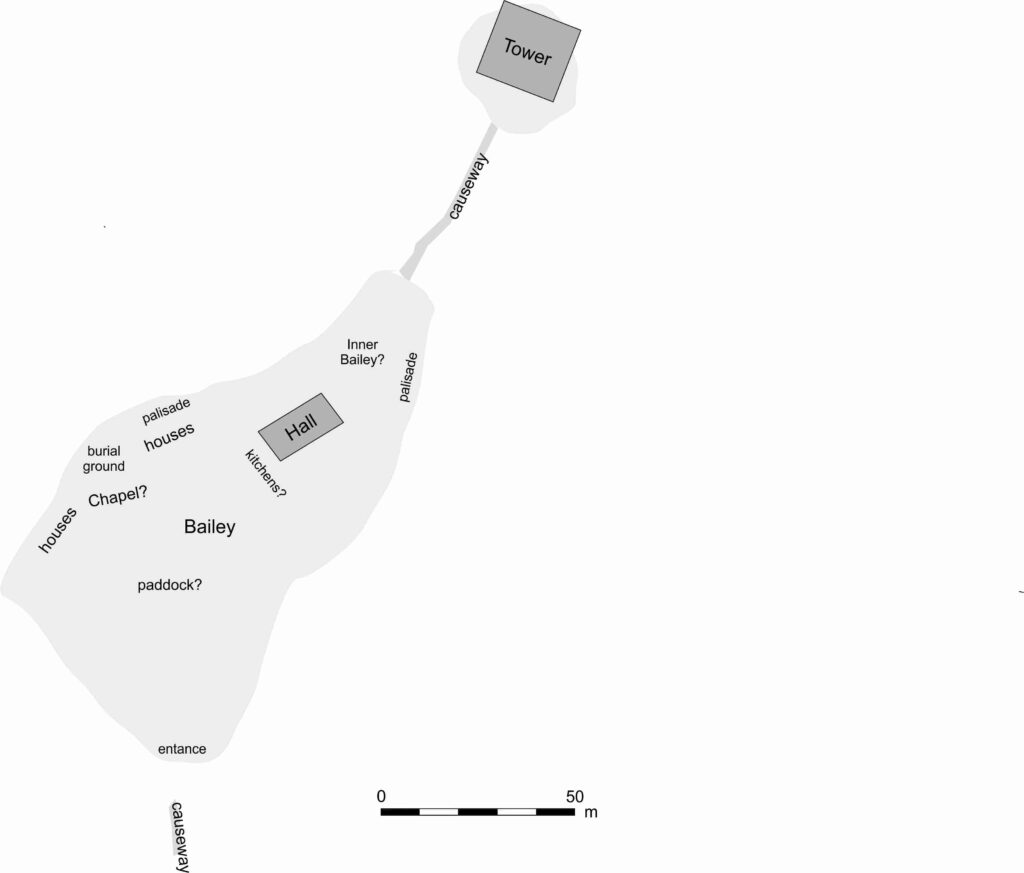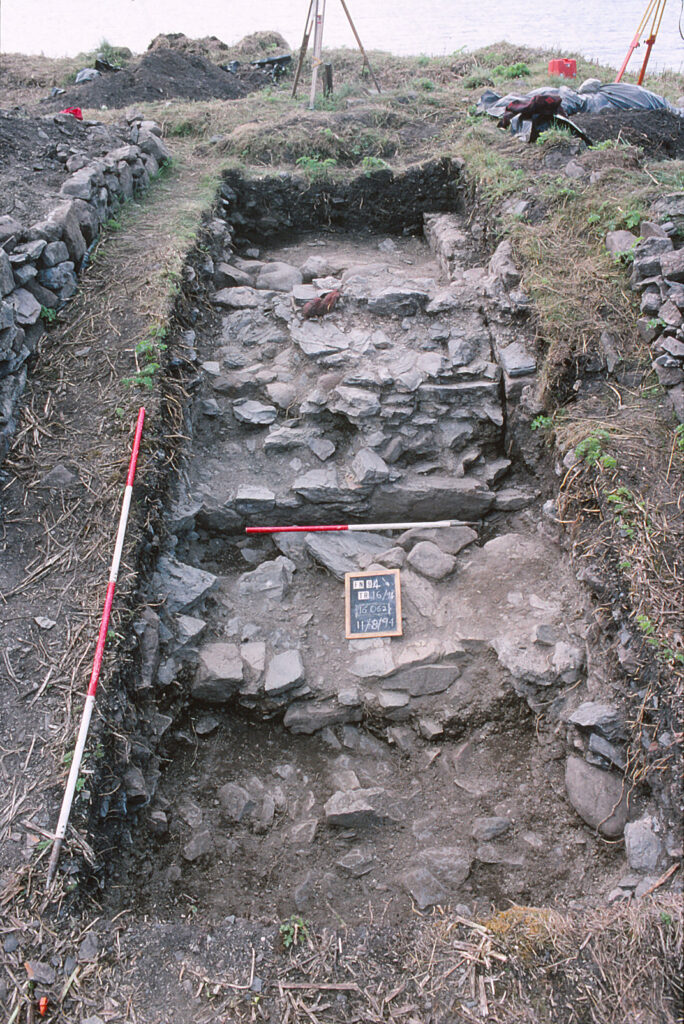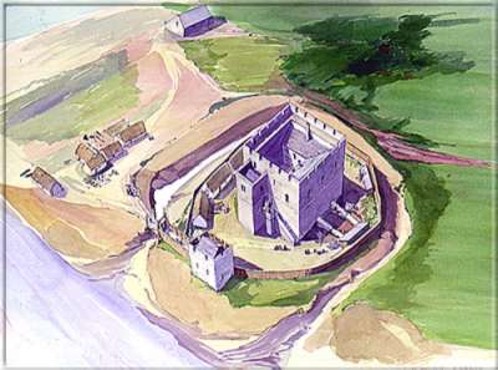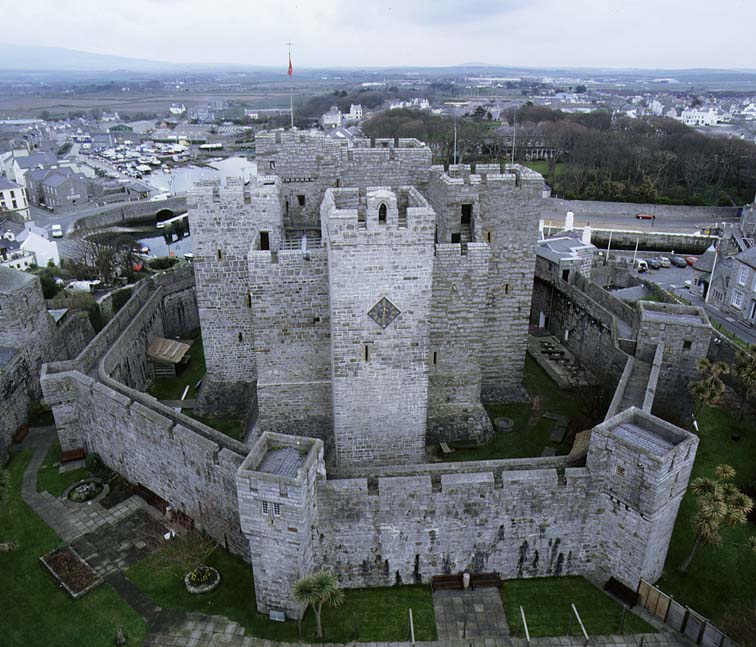Dr David Caldwell, formerly of the National Museum of Scotland, has just had the results of his excavations at Finlaggan in the 1990s published by the Society of Antiquaries of Scotland. Here he describes one of the more unexpected outcomes of the dig.
The main aim of the Finlaggan archaeological project was to shed light on a place believed to be the centre of the Lordship of the Isles in the fourteenth and fifteenth century. It consisted of two adjacent islands, Eilean Mór (the large island) and Eilean na Comhairle (the council island), in a freshwater loch in the island of Islay off the west coast of Scotland. The site was described as a castle by the Royal Commission in their inventory of ancient monuments published in 1984, but as the author pointed out to friends and colleagues on many occasions there was no such thing. Such documentary evidence as there was suggested an unfortified, palatial complex and that is what was discovered in the excavations, a residential and administrative centre for a large lordship spanning the Western Isles and parts of the mainland, a place where new lords were made and a council of the Isles met.
Subscribe to our quarterly newsletter

But the practice of archaeology is rarely straightforward and is always likely to produce evidence contrary to the predictions required for research proposals. So it turned out that the later medieval residence of the lords was a successor to a castle of twelfth- and thirteenth-century date. There was a substantial, 19m square masonry tower occupying all the available space on Eilean na Comhairle, connected by a stone causeway to Eilean Mór. Only tantalisingly small glimpses of castle structures could be seen here under later structures, but enough to be clear that there was a timber palisade enclosing structures including a great hall, kitchens, houses and probably a chapel. Another stone causeway provided access from the lochside.
This was clearly a major castle but no records of its existence have been found in the admittedly meagre documentary records for this part of the world. We do not know for sure who might have had it built, nor do we have any certainty about what it might have been called. Eilean Mór was known in later medieval times as the island of St Finlaggan, referencing the cult of a saint, Findlugán, a contemporary of St Columba. It is possible that that dedication is no earlier than about 1300 and has resulted in the loss of an earlier placename of Scandinavian type. Most of the surrounding farm names are Gaelicisations of Norse names.

In terms of size the Finlaggan tower is similar to the one that forms the core of Castle Rushen, now believed to have been built for Rognvald Godredsson, King of the Isles from 1188 to 1226. The masonry, with coursed, long and low rubble blocks, is similar to Finlaggan. King Rognvald is clearly a contender to be considered the builder of the Finlaggan tower. The writer, however, believes that a more likely candidate for this role was Rognvald’s rival for power in the kingdom, Ranald son of Somerled, also regarded as a king. He was the ancestor of the MacDonalds and according to later traditions, a crusader. There are two main reasons for this identification.


First, a substantial midden deposit in the loch adjacent to Eilean na Comhairle was sampled and produced ample evidence for fine dining by a lordly or kingly household in the thirteenth century and many sherds of medieval wheel-made pottery. There is no evidence of such ceramics being manufactured anywhere in the Isles apart from the Isle of Man and so all the wheel-made pottery recovered at Finlaggan can be regarded as imports, almost all from the Scottish mainland. No Manx pottery has been recovered from Finlaggan or other Hebridean sites and no Scottish medieval pottery has been recorded from the Isle of Man. Somerled and Ranald held lands in Scotland and their activities and rise to power can be seen in the context of a Scottish push westwards that resulted in the acquisition of all the kingdom of the Isles in 1266. The Chronicle of the Kings of Man and the Isles maintained at Rushen Abbey in Man maintained that the breakup of the Kingdom of the Isles into two parts was down to Somerled’s sons.
Second, it appears that Finlaggan was an important thing (assembly) site, arguably the predecessor of Tynwald in the Isle of Man. The actual place for meetings would have been on Eilean na Comhairle. The erection of a massive tower on top of it has the appearance of a hostile act by an incoming power. It is possible that the main Islay residence for the dynasty of kings based in the Isle of Man, ancestors of Rognvald Godredsson, was Dùn Ghùaidhre. The folk of Islay are clear that it is named for King Godred Crovan who died in Islay in 1095.
The Archaeology of Finlaggan, Islay is available from the Society of Antiquaries of Scotland’s online shop, with a 20% discount for Fellows of the Society. Dr Caldwell will also be delivering a free public lecture on Finlaggan on Saturday 29 November in Edinburgh and online.